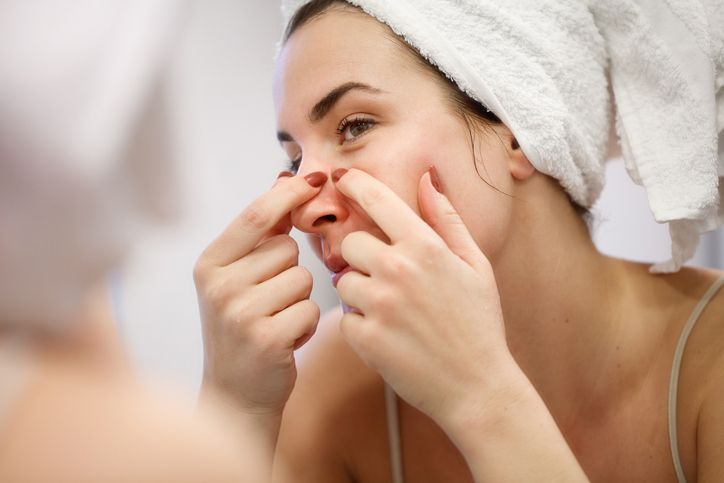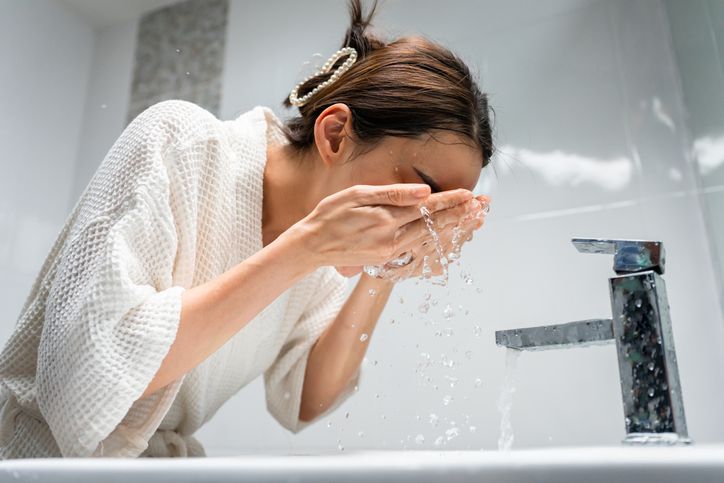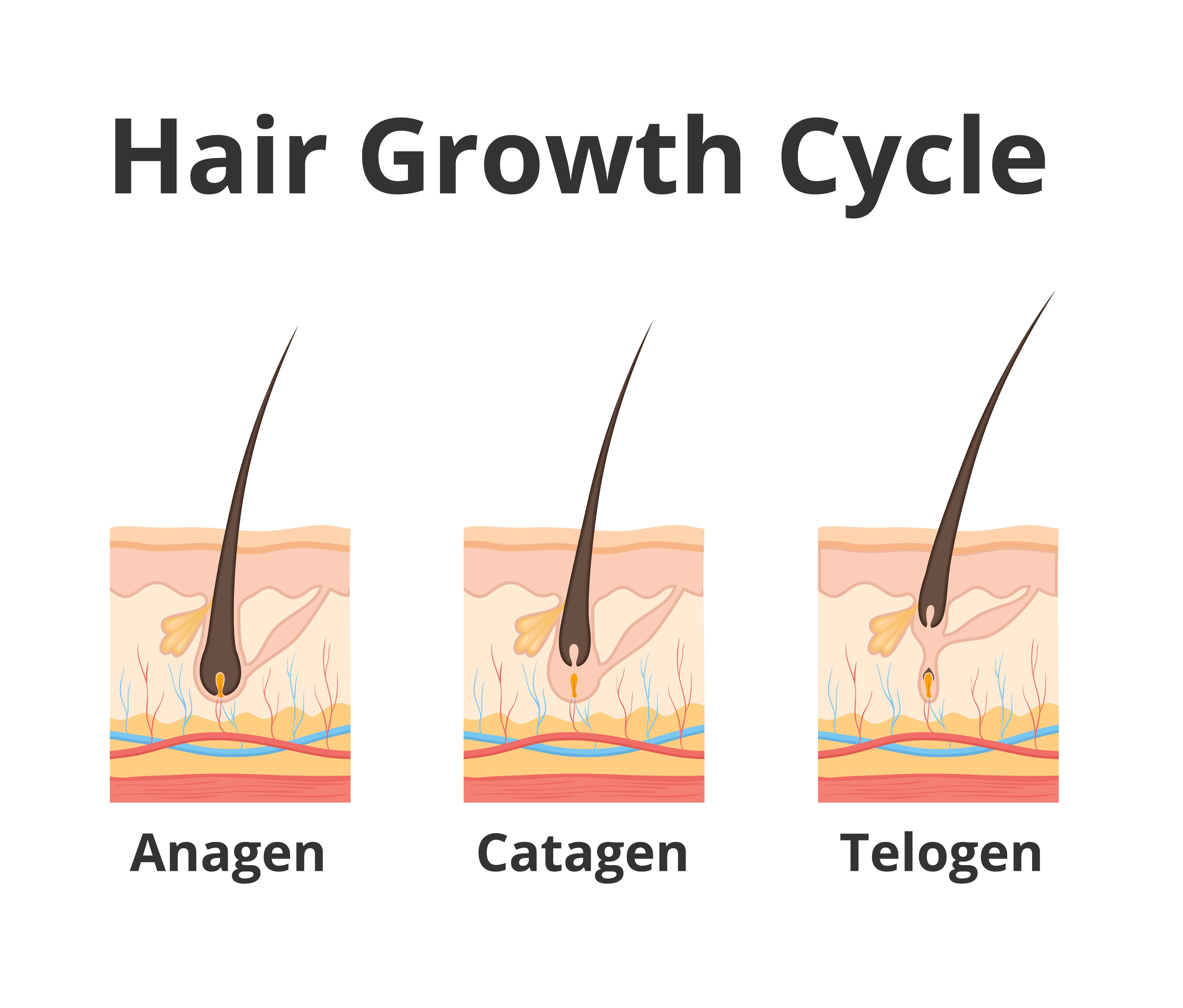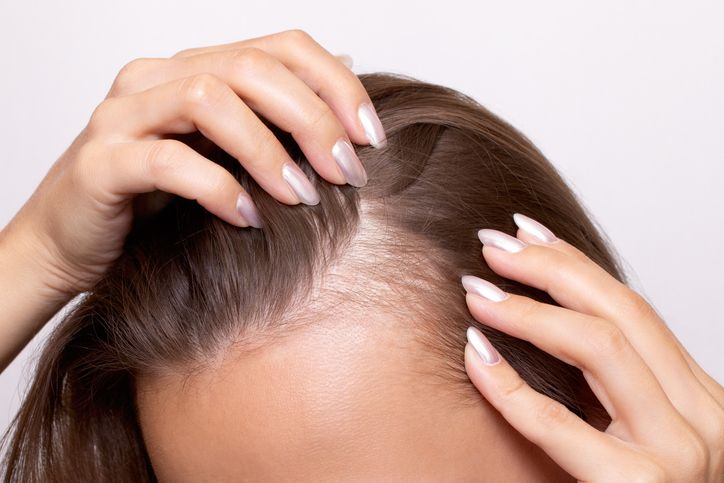- Home
- Trend
- Weight Loss Strategies
- Acne Tips
- Hair Health Information
- Blemish Removal Tips
- Acne Scar Removal Tips
- Muscle Building Techniques
- Intimate Care Tips
- Postpartum Intimate Care
- Eye Bags Wiki
- Tips for Face Slimming
- Secret of Permanent Hair Removal
- Breast Enlargement Tips
- Cure to Snoring
- Marionette Lines
- Skin-Tightening Secrets
Whiteheads, a common skin condition, can be both frustrating and challenging to manage. They occur when clogged pores trap sebum, dead skin cells, and sometimes acne causing bacteria, leading to small, closed comedones.
Why Do Whiteheads Form?

Whiteheads are a common skin concern caused by clogged pores. They develop when the natural process of oil and dead cell removal becomes disrupted. Here's a closer look at the key factors behind their formation:
The Role of Sebaceous Glands
Sebaceous glands, which are connected to hair follicles, produce sebum to keep the skin hydrated and protected. However, when these glands become overactive—often due to hormonal fluctuations—they produce excessive oil. This excess sebum can mix with dead skin cells and bacteria, clogging the follicle opening and leading to whiteheads.
Accumulation of Dead Skin Cells
The skin naturally sheds dead cells as part of its renewal cycle. When this process is disrupted, dead cells can accumulate on the skin's surface. Combined with oil, these dead cells block the pores, creating the perfect environment for whiteheads to form.
Hormonal Changes
Hormonal fluctuations are a significant driver of whitehead development. During puberty, menstruation, pregnancy, or periods of high stress, the body often increases androgen levels. This spike stimulates the sebaceous glands to produce more oil, heightening the risk of clogged pores and whiteheads.
Impact of Hair Products
Certain hair products, especially those containing heavy oils, silicones, or waxes, can transfer to the skin, particularly around the hairline. This transfer can clog nearby pores, contributing to whitehead formation in areas like the forehead or temples.
Skincare Choices and Practices
The type of skincare products you use significantly impacts your skin’s health. Products that are comedogenic (pore-clogging) can trap oil and dead skin cells, worsening whitehead development. Similarly, over-cleansing or using harsh products can strip the skin of its natural oils, causing skin irritation and prompting the sebaceous glands to overproduce sebum.
Who Is More Likely to Get Whiteheads?
Both men and women can develop whiteheads, but certain factors make one group more susceptible than the other depending on life stages and hormonal changes:
Women
Women are generally more prone to whiteheads due to hormonal fluctuations during specific life events. These fluctuations can stimulate sebaceous glands, increasing oil production and the likelihood of clogged pores. Common triggers include:
1. Puberty: Hormonal changes during puberty often lead to increased androgen levels, resulting in excess sebum production.
2. Menstrual Cycles: Many women experience acne breakouts, including whiteheads, around their menstrual periods due to hormonal shifts.
3. Pregnancy: Hormonal surges during pregnancy can cause heightened sebum production.
4. Hormonal Birth Control: Certain contraceptives can trigger whiteheads, depending on their effect on androgen levels.
5. Cosmetic Use: Women are more likely to use skincare and makeup products, which, if comedogenic, can clog pores and contribute to whiteheads.
Men
Men may be less likely to develop whiteheads overall but are still susceptible, particularly during puberty and in cases of:
1. Puberty: Like women, men experience androgen surges during puberty, which increase sebum production and clog pores.
2. Thicker Skin and Larger Pores: Men naturally have thicker skin and larger pores, which can trap more oil and dead skin cells, leading to whiteheads.
3. Sweating and Beard Growth: Sweating from physical activities or beard growth can contribute to pore blockages, especially if cleansing routines are insufficient.
Essentially, women are generally more prone to whiteheads due to the recurring hormonal fluctuations they experience throughout life. However, men with oily skin, poor grooming habits, or active lifestyles may also face persistent whitehead issues.
免費體驗
Acne Treatment
1 Minute Self-Registration
Date should not be before minimal date
When Should You Worry About Your Whiteheads?
Whiteheads are typically a mild and common form of acne, often treatable with simple adjustments to your skincare routine and over-the-counter products. However, there are instances when whiteheads may indicate a deeper skin issue or require professional attention. Here’s when you should start worrying about your whiteheads:
1. Whiteheads are Persisting Despite Treatment
If whiteheads don’t respond to consistent use of topical treatments like salicylic acid, benzoyl peroxide, or even prescribed products, it could be a sign of a more stubborn form of acne. Persistent whiteheads might need advanced solutions that can deeply cleanse clogged pores and target the root causes effectively.
2. Whiteheads are Widespread or Becoming Inflamed
When whiteheads spread across large areas of your face or body, or if they start to develop redness and swelling, it may signal a transition into inflammatory acne. This progression could indicate a more severe acne condition, requiring intervention from a dermatologist or a comprehensive treatment plan.
3. Whiteheads are Causing Pain or Discomfort
Whiteheads are generally painless. If they become tender or sore, it might be a sign of an infection or inflammation. This can happen when bacteria within clogged pores lead to swelling and irritation. Painful acne lesions often require prescription medications or professional treatments to resolve effectively.
4. Scarring or Dark Spots Begin to Develop
If your whiteheads are leading to scarring or post-inflammatory hyperpigmentation (dark spots), it’s a cause for concern. This often results from improper handling, such as popping or squeezing whiteheads, or untreated inflammation. To prevent long-term damage, seek professional care to treat whiteheads safely and minimize scarring risks.
5. Whiteheads Are Accompanied by Other Symptoms
Whiteheads that occur alongside unusual symptoms like severe redness, persistent dryness, or peeling skin might indicate an allergic reaction, underlying skin condition, or side effects from skincare products. Consulting a healthcare provider can help identify the root cause and prevent further complications.
What Doesn’t Work: 5 Myths or Ineffective Strategies
While there are plenty of effective options for treating whiteheads, some popular methods can do more harm than good. It’s important to separate fact from fiction to avoid making your skin problems worse. Let’s dive deeper into these common mistakes and why they don’t work.
1. Over-Cleansing and Scrubbing
Scrubbing your skin aggressively or washing your face multiple times a day may seem like a proactive way to treat whiteheads, but it often has the opposite effect. Over-cleansing strips your skin of its natural oils, disrupting the delicate balance your skin needs to stay healthy. This overcompensation triggers the sebaceous glands to produce even more oil, which can clog pores and worsen whiteheads.
2. Skipping Sunscreen
The myth that sunscreen clogs pores often deters people from using this essential product. However, avoiding sunscreen leaves your skin vulnerable to UV damage, which exacerbates skin issues like hyperpigmentation and collagen breakdown. Irritated and damaged skin is more prone to clogged pores and inflammation, increasing the likelihood of whiteheads.
3. Popping and Squeezing Whiteheads
Manually popping whiteheads might seem like a quick fix, but it’s one of the most damaging habits for your skin. This practice introduces bacteria into the pores, worsening inflammation and often resulting in acne lesions, scarring, or post-inflammatory hyperpigmentation.
4. Using Harsh DIY Remedies
DIY skincare remedies are tempting due to their accessibility, but many popular options like toothpaste, lemon juice, or baking soda are far too harsh for the skin’s delicate pH balance. These substances can irritate the skin’s surface, causing redness, dryness, or even chemical burns, which aggravate whiteheads instead of treating them.
5. Relying on Tanning or UV Exposure
The idea that tanning or UV exposure “dries out” whiteheads is a harmful myth. Prolonged UV exposure can worsen skin conditions by causing inflammatory acne, irritation, and long-term damage like premature aging and dark spots. Far from solving the problem, this approach puts your skin at risk for severe consequences.
What Works When Whiteheads Occur?

When it comes to tackling whiteheads effectively, a strategic approach that combines professional care, lifestyle adjustments, and smart skincare choices can make all the difference.
Perfect Medical’s Acne Treatment
If you’ve tried countless topical treatments with limited success, Perfect Medical’s Acne Treatment offers a game-changing solution. This professional-grade treatment employs vacuum dermabrasion technology to address the underlying causes of whiteheads—excess oil, dead skin cells, and clogged pores:
Deeply Cleanses and Unclogs Pores: The vacuum dermabrasion process removes impurities and oil buildup trapped deep within the pores, ensuring a fresh start for your skin.
Stimulates Collagen Production: By boosting collagen levels, it repairs acne blemishes and promotes skin cell turnover, leaving your skin rejuvenated and less prone to future whiteheads.
Non-Invasive and Pain-Free: Suitable for all skin types, including sensitive skin, this advanced treatment provides visible results without downtime or discomfort.
Long-Term Prevention: Unlike surface-level topical solutions, this treatment offers a proactive approach, minimizing the recurrence of whiteheads by addressing their root causes.
Ideal for those struggling with stubborn whiteheads that resist topical treatments, this non-invasive option ensures visible results with no downtime.
Dietary Adjustments
Your diet has a direct impact on your skin. Studies reveal that high-glycemic foods like sugary snacks, processed carbohydrates, and dairy products can spike insulin levels, increasing oil production and clogging pores.
Switching to a diet rich in whole foods, leafy greens, omega-3 fatty acids, and antioxidants can help regulate sebum production and prevent whiteheads. For instance:
• Omega-3 fatty acids found in salmon and walnuts reduce inflammation.
• Zinc-rich foods like chickpeas and pumpkin seeds promote skin healing.
• Avoiding sugary drinks and processed snacks can drastically improve overall skin health.
Stress Management
Stress is an often-overlooked contributor to whitehead formation. When you’re stressed, your body produces higher levels of cortisol, a hormone that over-stimulates sebaceous glands, leading to excess oil production and clogged pores.
To reduce stress and its impact on your skin:
• Practice meditation or mindfulness for 10–15 minutes daily.
• Engage in regular physical activities like yoga, walking, or cycling to lower cortisol levels.
• Prioritize sleep to allow your skin to repair overnight and maintain hormonal balance.
Regular, Non-Comedogenic Makeup and Haircare Practices
Many makeup and haircare products contain ingredients like silicones, oils, and waxes that can clog pores, especially when left on the skin for long periods. Switching to non-comedogenic products ensures that your beauty regimen doesn’t contribute to pore blockage or whitehead formation.
Makeup: Look for labels like “non-comedogenic” or “oil-free” when choosing foundations, primers, and concealers. Always remove makeup thoroughly before bedtime to allow your skin to breathe.
Haircare: Avoid heavy oils or wax-based products that can drip onto your face, especially around the hairline. Cleanse your skin after applying hair products to minimize pore-clogging risks.
Consistent Skincare Routine with Balanced Hydration
Consistency is key when it comes to skincare. A well-thought-out routine can keep your pores clear, balance your skin’s natural oils, and reduce whiteheads.
Cleanse: Use a gentle, non-comedogenic cleanser twice a day to remove dirt, excess oil, and makeup. Avoid harsh soaps that strip the skin of natural oils, causing irritation and overcompensation with excess oil production.
Exfoliate: Incorporate products with salicylic acid or beta hydroxy acids (BHAs) into your routine to remove dead skin cells and unclog pores. These ingredients are especially effective at treating whiteheads.
Hydrate: Even oily skin needs moisture. A lightweight, oil-free moisturizer will keep your skin balanced and prevent overproduction of sebum.
Spot Treatments: Products containing benzoyl peroxide or tea tree oil can help target stubborn whiteheads and reduce acne lesions.
免費體驗
Acne Treatment
1 Minute Self-Registration
Date should not be before minimal date
Final Thoughts
Whiteheads may seem like a small concern, but they can have a significant impact on your skin’s health and appearance if not addressed properly. Instead of relying on outdated remedies or ineffective habits, take control of your skincare journey by making informed choices. Perfect Medical’s Acne Treatment stands out as a game-changing solution, offering professional-grade care to tackle the root causes of whiteheads—excess oil, clogged pores, and dead skin cells.
Don’t wait until whiteheads escalate into stubborn or more severe acne. Whether you’re dealing with occasional flare-ups or persistent small bumps, it’s time to invest in solutions that truly work. Take the first step toward smoother, healthier skin today by exploring Perfect Medical’s innovative treatments. Book a consultation now to see how professional care can transform your complexion and give you the confidence you deserve!
Acne Treatment免費體驗
Acne Treatment
1 Minute Self-Registration
Date should not be before minimal date
FAQ

1. How do overactive oil glands contribute to whiteheads?
Overactive oil glands produce excess sebum, which combines with dead skin cells and bacteria to clog hair follicles. This leads to the formation of whiteheads, which appear as small bumps on the skin's surface. Managing sebum production with gentle skincare products and professional treatments, such as those with antimicrobial properties, can help reduce whitehead formation.
2. What are some effective treatment options for whiteheads and how do they differ from treatments for blackheads?
Whiteheads and blackheads both result from clogged pores, but their treatment varies slightly. Whiteheads affect closed pores and benefit from topical treatments like salicylic acid or benzoyl peroxide. A leave-on gel with these ingredients can unclog pores and prevent future buildup. Blackheads form in open pores, making an exfoliation the key for their removal. For both, treatments with antimicrobial properties can reduce acne-causing bacteria.
3. Are there home remedies for small bumps like whiteheads, and are they effective?
Some home remedies, such as tea tree oil or honey, offer antimicrobial properties that can reduce bacteria in the affected area. However, they are typically less effective than targeted treatment options available in over-the-counter or professional solutions. While mild cases might respond to remedies, stubborn cases often require stronger interventions like retinoids or acne treatments.
4. Can using skincare products with lower concentrations of active ingredients still help treat whiteheads?
Yes, skin care products with lower concentrations of active ingredients like salicylic acid or retinoids are often sufficient for mild cases of whiteheads. They can gently unclog pores without causing irritation. For moderate to severe cases, higher concentrations or professional treatments may be necessary to treat the affected area effectively.
5. How do whiteheads compare to other forms of acne, and what makes most whiteheads easier to manage?
Whiteheads are considered a milder form of acne compared to inflammatory conditions like cystic acne. Most whiteheads are easier to manage because they involve closed pores, making them less prone to infection. Consistent use of targeted products, professional treatments, or home remedies can address whiteheads effectively, while severe acne may require a dermatologist's intervention.









